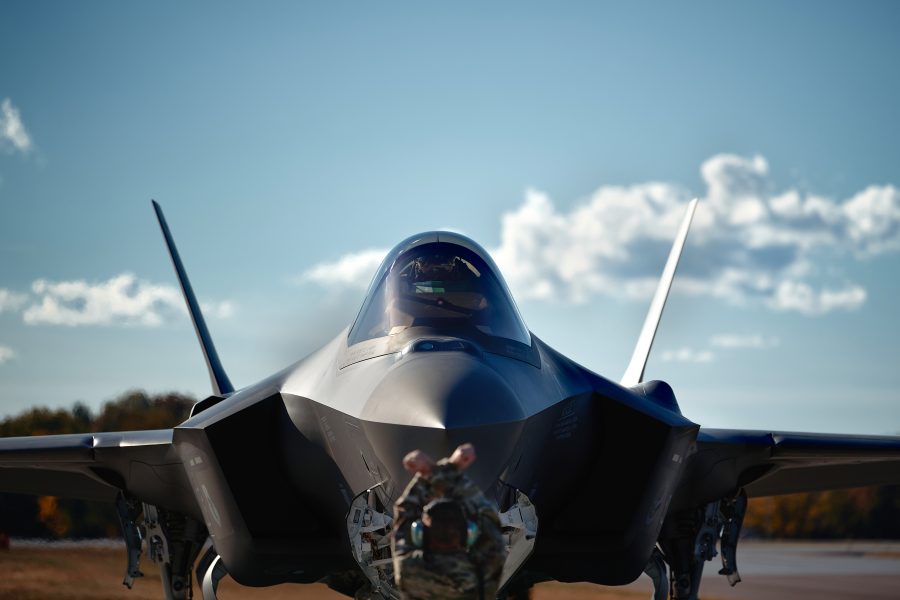The Air Force remains committed to the F-35, and it is the “cornerstone” of USAF’s force planning, but the new tactical aviation study will decide if USAF should surge its production of the jet, Chief of Staff Gen. Charles Q. Brown Jr. said Feb. 25.
In a press conference at AFA’s virtual Aerospace Warfare Symposium, Brown disputed recent media reports that have pronounced the F-35 a failure.
“The F-35 is the cornerstone of our … fighter capability,” and of USAF’s plans for the future, Brown asserted. The TacAir study he unveiled last week will simply look at what systems will be needed to complement it, he said. The age of most of the fighter force—averaging 29 years—compels USAF to “look ahead … 10, 15 years in the future” at the right mix of aircraft for the missions expected in that timeframe, Brown said. The study will develop “where we think we need to go, and how we get from where we are today to … the future.
He also acknowledged that, at the current purchase rate of 48 to 60 airplanes a year, it will be the mid-2040s before the Air Force’s planned buy of 1,763 F-35s from Lockheed Martin is complete.
“I’m not sure that’s fully appreciated,” Brown said of the long production run. If the service sticks to 1,763, the Air Force may “need to accelerate” the ramp rate, conditional on the funding that Congress will allow.
“I can’t commit” to a surge in production yet, Brown said. “To get there faster, we’re going to have to have a spike” in production, but it will also depend on whether “our … defense industry partners” can produce at the rates USAF needs, he said. “I can’t [decide] this myself.”
He acknowledged there are “cost pressures” related to the F-35—the service has complained about the cost per flying hour—and said this is something the Air Force is “working [on] with Lockheed Martin.”
The Air Force was directed to buy the Boeing F-15EX because F-15sC/Ds were rapidly aging out, the Pentagon wanted to create some competition for the F-35, and Pentagon officials were concerned that Lockheed Martin couldn’t build the F-35 in sufficient quantities to equip the services in a timely manner.
When the F-35 buy rates were forecast at the outset of production, the Air Force said it expected to be buying upwards of 110 of the fighters a year by 2018, with the goal of buying out its last Lightning IIs by the early 2030s. However, the service has requested only 48 F-35s in each of the last four budgets, that figure having been later increased to 60 annually by Congress.
Brown specifically ruled out raiding the F-35 accounts to buy the Next Generation Air Dominance fighter, now in development.
“We’re not going to take money from F-35” to fund NGAD, he said. The NGAD will be financed “from some of the other … parts of the fighter force,” he said, adding that he will continue trying to “bring down … some of the older aircraft” to get the average age of the fighter fleet down, but neither does he want “a big gap in capability as we go forward.”
“We want to keep the F-35 on track,” he said, but he also is keeping an eye on the threat, and won’t permit USAF to “just build something” without trying to overmatch adversary capabilities.
Asked if there will be two variants of the NGAD—one for Europe, where combat ranges are small, and one for the Indo-Pacific, where distances are great—Brown said “the goal is to provide … as much range as possible.” A longer-legged aircraft “provides you additional options” for basing, and will require fewer tankers, adding to the force’s flexibility.
The TacAir study, which will be done in partnership with the Joint Staff, evaluating all the services’ aviation plans, will also look at what a future fighter squadron looks like, and whether squadrons will be a mix of manned and unmanned aircraft, Brown said.
